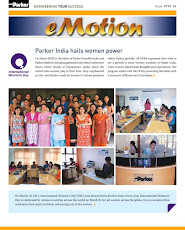Quotations from General Colin Powell: A Leadership Primer
Lesson 1
"Being responsible sometimes means pissing people off. "Good leadership involves responsibility to the
welfare of the group, which means that some people will get angry at your actions and decisions. It's
inevitable- if you're honorable. Trying to get everyone to like you is a sign of mediocrity: You'll avoid
the tough decisions, you'll avoid confronting the people who need to be confronted, and you'll avoid
offering differential rewards based on differential performance because some people might get upset.
Ironically, by procrastinating on the difficult choices, by trying not to get anyone mad, and by treating
everyone equally "nicely" regardless of their contributions, you'll simply ensure that the only people
you'll wind up angering are the most creative and productive people in the organization.
Lesson 2
"The day soldiers stop bringing you their problems is the day you have stopped leading them. They
have either lost confidence that you can help them or concluded that you do not care. Either case is a
failure of leadership." If this were a litmus test, the majority offers would fail. One, They build so
many barriers to upward communication that the very idea of someone lower in the hierarchy looking
up to the leader for help is ludicrous. Two, the corporate culture they foster often defines asking for
help as weakness or failure, so people cover up their gaps, and the organization suffers accordingly.
Real leaders make themselves accessible and available. They show concern for the efforts and
challenges faced by underlings-even as they demand high standards. Accordingly, they are more
likely to create an environment where problem analysis replaces blame.
Lesson 3
"Don't be buffaloed by experts and elites. Experts often possess more data than judgment. Elites can
become so inbred that they produce hemophiliacs who bleed to death as soon as they are nicked by the real world." Small companies and startups don't have the time for analytically detached experts. They don't have the money to subsidize lofty elites, either. The president answers the phone and drives the truck when necessary; everyone on the payroll visibly produces and contributes to bottom-line results or they're history. But as companies get bigger, they often forget who "bring them to the dance":
things like all-hands involvement, egalitarianism, informality, market intimacy, daring, risk, speed,
agility. Policies that emanate from ivory towers often have an adverse impact on the people out in the
field who are fighting the wars or bringing in the revenues. Real leaders are vigilant-and combative in
the face of these trends.
Lesson 4
"Don't be afraid to challenge the pros, even in their own backyard." Learn from the pros, observe
them, seek them out as mentors and partners. But remember that even the pros may have leveled out
in terms of their learning and skills. Sometimes even the pros can become complacent and lazy.
Leadership does not emerge from blind obedience to anyone. Xerox's Barry Rand was right on target
when he warned his people that if you have a yes-man working for you, one of you is redundant. Good
leadership encourages everyone's evolution.
Lesson 5
"Never neglect details. When everyone's mind is dulled or distracted the leader must be doubly
vigilant." Strategy equals execution. All the great ideas and visions in the world are worthless if they
can't be implemented rapidly and efficiently. Good leaders delegate and empower others liberally, but
they pay attention to details, every day. (Think about supreme athletic coaches like Jimmy Johnson,
Pat Riley and Tony La Russa). Bad ones-even those who fancy themselves as progressive visionaries think they're somehow "above"operational details. Paradoxically, good leaders understand something
else: An obsessive routine in carrying out the details begets conformity and complacency, which in
turn dulls everyone's mind. That is why even as they pay attention to details, they continually
encourage people to challenge the process. They implicitly understand the sentiment of CEO - leaders
like Quad Graphic's Harry Quadracchi, Oticon's Lars Kolind and the late Bill McGowan of Mel, who
all independently asserted that the job of a leader is not to be the chief organizer, but the chief
disorganizer.
Lesson 6
"You don't know what you can get away with until you try." You know the expression "it's easier to get
forgiveness than permission?" Well, it's true. Good leaders don't wait for official blessing to try things
out. They're prudent, not reckless. But they also realize a fact of life in most organizations: If you ask
enough people for permission, you'll inevitably come up against someone who believes his job is to say
"no."So the moral is, don't ask. I'm serious. In my own research with colleague Linda Mukai, we found
that less effective middle managers endorsed the sentiment, "If I haven't explicitly been told 'yes,' I
can't do it," whereas the good ones believed "If I haven't explicitly been told 'no,' I can." There's a world of difference between these two points of view.
Lesson 7
"Keep looking below surface appearances. Don't shrink from doing so Gust) because you might not like
what you find." "If it ain't broke, don't fix it" is the slogan of the complacent, the arrogant or the
scared. It's an excuse for inaction, a call to non-arms. It's a mind-set that assumes (or hopes) that
today's realities will continue tomorrow in a tidy, linear and predictable fashion. Pure fantasy. In this
sort of culture, you won't find people who proactively take steps to solve problems as they emerge.
Here's a little tip: Don't invest in these companies.
Lesson 8
"Organization doesn't really accomplish anything. Plans don't accomplish anything, either. Theories of
management don't much matter. Endeavors succeed or fail because of the people involved. Only by
attracting the best people will you accomplish great deeds." In a brain-based economy,your best
assets are people. We've heard this expression so often that it's become trite. But how many leaders
really "walk the talk" with this stuff? Too often, people are assumed to be empty chess pieces to be
moved around by grand viziers, which may explain why so many top managers immerse their
calendar time in deal making, restructuring and the latest management fad. How many immerse
themselves in the goal of creating an environment where the best, the brightest, the most creative are
attracted, retained and-most importantly-unleashed?
Lesson 9
"Organization charts and fancy titles count for next to nothing." Organization charts are frozen,
anachronistic photos in a workplace that ought to be as dynamic as the external environment around
you. If people really followed organization charts, companies would collapse. In well-run
organizations, titles are also pretty meaningless. At best, they advertise some authority-an official
status conferring the ability to give orders and induce obedience. But titles mean little in terms of real
power, which is the capacity to influence and inspire. Have you ever noticed that people will
personally commit to certain individuals who on paper (or on the org chart) possess little authority but
instead possess pizzazz, drive, expertise and genuine caring for teammates and products? On the
flip side, nonleaders in management may be formally anointed with all the perks and frills associated
with high positions, but they have little influence on others, apart from their ability to extract minimal
compliance to minimal standards.
Lesson 10
"Never let your ego get so close to your position that when your position goes, your ego goes with it."
Too often, change is stifled by people who cling to familiar turfs and job descriptions. One reason that
even large organizations wither is that managers won't challenge old, comfortable ways of doing
things. But real leaders understand that, nowadays, every one of our jobs is becoming obsolete. The
proper response is to obsolete our activities before someone else does. Effective leaders create a climate where people's worth is determined by their willingness to learn new skills and grab new
responsibilities, thus perpetually reinventing their jobs. The most important question in performance
evaluation becomes not, "How well did you perform your job since the last time we met?" but, "How
much did you change it?"
Lesson 11
''Fit no stereotypes. Don't chase the latest management fads. The situation dictates which approach
best accomplishes the team's mission." Flitting from fad to fad creates team confusion, reduces the
leader's credibility and drains organizational coffers. Blindly following a particular fad generates
rigidity in thought and action. Sometimes speed to market is more important than total quality.
Sometimes an unapologetic directive is more appropriate than participatory discussion. To quote
Powell, some situations require the leader to hover closely; others require long, loose leashes. Leaders
honor their core values, but they are flexible in how they execute them. They understand that
management techniques are not magic mantras but simply tools to be reached for at the right times.
Lesson 12
"Perpetual optimism is a force multiplier." The ripple effect of a leader's enthusiasm and optimism is
awesome. So is the impact of cynicism and pessimism. Leaders who whine and blame engender those
same behaviors among their colleagues. I am not talking about stoically accepting organizational
stupidity and performance incompetence with a "what, me worry?" smile. I am talking about a gung ho
attitude that says "we can change things here, we can achieve awesome goals, we can be the best."
Spare me the grim litany of the "realist"; give me the unrealistic aspirations of the optimist any day.
Lesson 13
" 'Powell's Rules for Picking People.' Look for intelligence and judgment and , most critically, a capacity to anticipate, to see around corners. Also look for loyalty, integrity, a high energy drive, a balanced ego and the drive to get things done." How often do our recruitment and hiring processes tap into these attributes? More often than not, we ignore them in favor of length of resume, degrees and prior titles.
A string of job descriptions a recruit held yesterday seem to be more important than who one is today,
what she can contribute tomorrow or how well his values mesh with those of the organization. You can
train a bright, willing novice in the fundamentals of your business fairly readily, but it's a lot harder
to train someone to have integrity, judgment, energy, balance and the drive to get things done. Good
leaders stack the deck in their favor right in the recruitment phase.
Lesson 14
(Borrowed by Powell from Michael Korda): "Great leaders are almost always great simplifiers, who can
cut through argument, debate and doubt, to offer a solution everybody can understand." Effective
leaders understand the KISS principle, or Keep It Simple, Stupid. They articulate vivid, overarching
goals and values, which they use to drive daily behaviors and choices among competing alternatives.
Their visions and priorities are lean and compelling, not cluttered and buzzword-laden. Their
decisions are crisp and clear, not tentative and ambiguous. They convey an unwavering firmness and
consistency in their actions, aligned with the picture of the future they paint. The result? Clarity of
purpose, credibility of leadership, and integrity in organization.
Lesson 15
Part I: "Use the formula P@ to 70, in which P stands for the probability of success and the numbers
indicate the percentage of information acquired." Part IT: "Once the information is in the 40 to 70
range, go with your gut." Powell's advice is don't take action if you have only enough information to
give you less than a 40 percent chance of being right, but don't wait until you have enough facts to be
100 percent sure, because by then it is almost always too late. His instinct is right: today, excessive
delays in the name of information-gathering breeds "analysis paralysis." Procrastination in the name
of reducing risk actually increases risk.
Lesson 16
''The commander in the field is always right and the rear echelon is wrong, unless proved otherwise."
Too often, the reverse defines corporate culture. This is one of the main reasons why leaders like Ken
Iverson of Nucor Steel, Percy Barnevik of Asea Brown Boveri, and Richard Branson of Virgin have
kept their corporate staffs to a bare-bones minimum. (And I do mean minimum-how about fewer than
100 central corporate staffers for global $30 billion-plus ABB?Or around 25 and 3 for multi-billion
Nucor and Virgin, respectively?) Shift the power and the financial accountability to the folks who are
bringing in the beans, not the ones who are counting or analyzing them.
Lesson 17
"Have fun in your command. Don't always run at a breakneck pace. Take leave when you've earned it.
Spend time with your families." Corollary: "Surround yourself with people who take their work
seriously, but not themselves, those who work hard and play hard." Herb Kelleher of Southwest
Airlines and Anita Roddick of The Body Shop would agree: Seek people who have some balance in
their lives, who are fun to hang out with, who like to laugh (at themselves, too) and who have some
non-job priorities which they approach with the same passion that they do their work. Spare me the
grim workaholic or the pompous pretentious "professional;" I'll help them find jobs with my
competitor.
Lesson 18
"Command is lonely." Harry Truman was right. Whether you're a CEO or the temporary head of a
project team, the buck stops here. You can encourage participative management and bottom-up
employee involvement but ultimately, the essence of leadership is the willingness to make the tough,
unambiguous choices that will have an impact on the fate of the organization. I've seen too many nonleaders flinch from this responsibility. Even as you create an informal, open, collaborative corporate
culture, prepare to be lonely.









